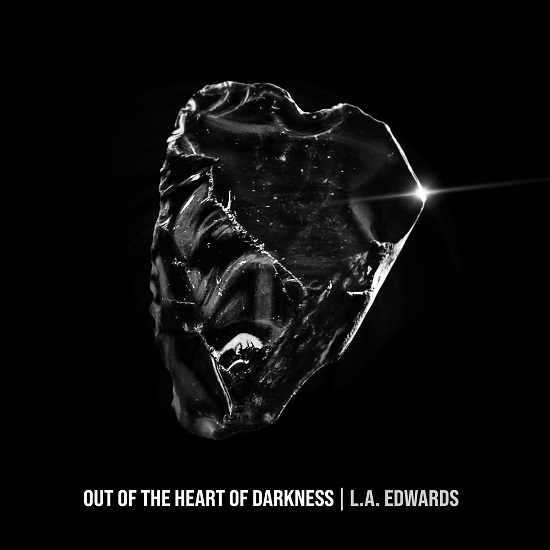
Imagine driving along the freeway in the early eighties. The sun’s shining, the roof’s down and the radio’s tuned to the local FM station. You could be listening to any song from the L.A. (Luke Andrew) Edwards album ‘Out of the Heart of Darkness’. Unfortunately the press pack didn’t come with a time machine, so it was a Skoda on the A12 but at least the sun co-operated. The album’s packed with nine classic FM style rock songs influenced by the bands of the late seventies and the early eighties mixed with Luke Edwards’ acoustic folk roots to create a widescreen sound that’s difficult to resist.
The album starts with a haunting spoken intro from a child in some sort of distress before launching into ‘Little Boy Blue’ which opens with the album’s trademark jangling guitars overlaid with a synth line. The chiming guitars, harking back to Tom Petty, The Byrds and even the Mersey Sound are a constant throughout the album and L.A.’s slightly nasal intonation emphasises the Tom Petty connection (his first solo album was produced by former Heartbreaker Ron Blair) and there are hints of other influences as well. Creedence Clearwater Revival and the Laurel Canyon groups; Neil Young, Eagles and so on, but there are a few surprises as well.
Most of the musical stylings are standard rock band arrangements (drums, bass, guitars and keys) but there are a few surprises as well. ‘Already Gone’ (not an Eagles cover) begins with a swirling Wurlitzer prelude before the sticks click and the band blasts into the song. There’s a good use of dynamics throughout the album as songs build up gradually and there are plenty of breakdowns to vary the tempo and power. ‘Stick to You’ is another interesting blend of styles, combining L.A.’s earlier folk roots with rock instrumentation and some tribal floor toms to create something that edges into Waterboys territory.
There’s plenty of novelty in the combinations of styles across the album, but there are a few of the old tricks as well including the squalling feedback intro on ‘Now You Know’ and the twin lead guitars opening ‘Time to Go’. There’s even the unapologetic drug references of ‘Hi Rite Now’; it’s got all of the ingredients for a classic rock album.
‘Out of the Heart of Darkness’ is released in the UK on Friday June 2nd and the band will be touring the UK and Europe in early July.
Here’s the video for ‘Already Gone’:
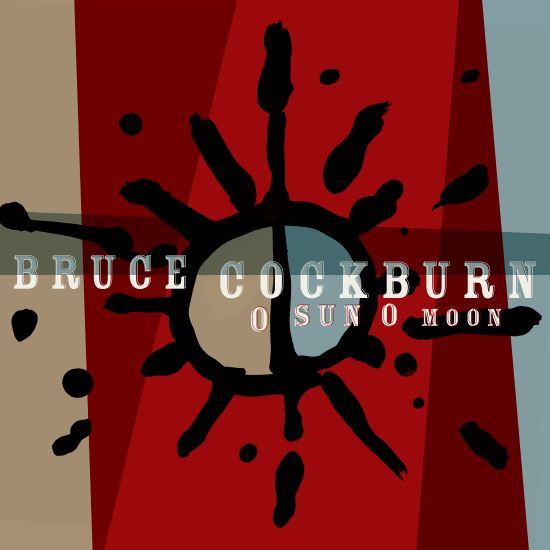
I started to listen to this album on the day that Gordon Lightfoot died, so I’m hoping that there isn’t some kind of omen in that. Bruce Cockburn occupies a similar space to Gordon Lightfoot as a legendary Canadian singer-songwriter in the folk idiom. Bruce is approaching his 78th birthday but still has the impulse to keep writing, recording and performing. ‘O Sun O Moon’ is proof that the quality of his work hasn’t diminished. The twelve tracks on the album are all built around acoustic guitars, but manage to show tremendous musical and lyrical variety. Here are a couple of examples.
‘King of the Bolero’ is the story of an itinerant blues picker “pulling visceral sounds from a no-name guitar” who’s based loosely on a player who was on the local circuit during Bruce’s high school years. It opens with finger-picked guitar and accordion in a shuffling lounge jazz style, adds some trumpet, mandolin and dulcimer along the way before the chorus cuts in with a New Orleans horn section. It’s all a bit surreal and dreamlike. ‘O Sun by Day, O Moon by Night’ is actually based on a vivid dream that Bruce had about his journey to Heaven and has spoken verses over a jazzy background and full-on New Orleans funeral horns accentuating the chorus. Mortality’s a bit of theme towards the end of the album; the closing song ‘When You Arrive’ is about reaching the end of life, while the message of ‘When the Spirit Walks’ is that when the end comes, it doesn’t matter who you were, you’re now just another thread in the fabric of history. The ethereal harmonies and insistent refrain of ‘Colin Went Down to the Water’ tell the story of a friend who died while Bruce was in Maui on vacation last year.
Don’t get the wrong idea; the album isn’t all about death. The album’s opener, ‘On A Roll’ takes a lively look at the march of time and the fact that we can still keep creating if we’re still on a roll. Bruce’s humanity shines through on in ‘Us All’ with a guitar, strings and glockenspiel arrangement and a vocal that hints at Paul Buchanan of The Blue Nile and the album’s second song, ‘Orders’ moves into unusually political territory with references to people that we’re all expected to love, including ‘The pastor preaching shades of hate, the self-inflating head of state’; it’s powerful stuff. Then there’s the ecological warning in the apocalyptic ‘To Keep the World We Know’, co-written with Susan Aglukark who sings harmonies on the song; it’s a clear message about worldwide climate change that we can’t afford to ignore.
‘O Sun O Moon’ is the work of an accomplished writer and performer in his senior years who still has plenty of fire in his belly. The playing is superb throughout and Bruce’s lyrics are perfect examples of concise brevity, where less is more. There’s a perfect example in ‘When You Arrive’ where the scene is set by the couplet: “Breakfast was Mahler and coffee, dinner’s Lightning Hopkins and rye”; there’s so much meaning packed into those ten words. This is an album you need to hear.
If you want to catch him live in the UK Bruce is touring in August with dates at Oxford O2 Academy (24th), Shepherd’s Bush Empire (25th) and Greenbelt Festival (26th). I might even see you at one of those.
‘O Sun O Moon’ is out in the UK on Friday May 12th on True North Records (TND811/TND811V).
Here’s the video for the album’s opener, ‘On A Roll’:
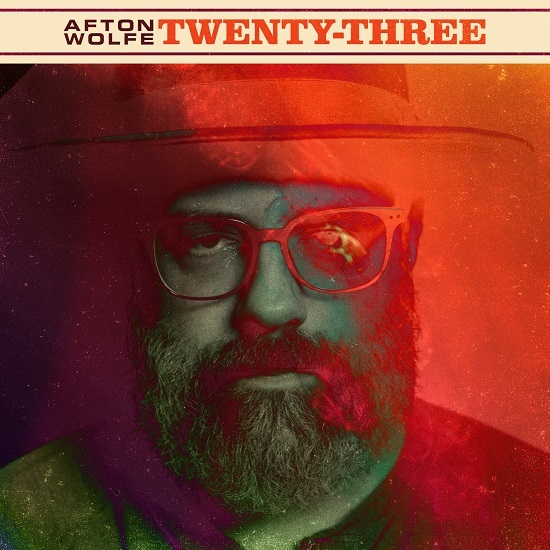
EP or mini album? My money would be on extended EP, but the way music’s distributed and consumed these days, it’s a moot point. Anyhow, Afton Wolfe has pulled together five songs, four of which have been released previously in a digital format and one new piece, ‘Cry’, which was written in response to a close friend’s personal tragedy.
Afton Wolfe is one of those rare artists that sound equally at home in three musical styles with similar roots; blues, soul and country and ‘Twenty-Three’ has references to all of these styles across its five tracks. And you couldn’t truly represent without having a triple-time song; ‘The Moon Is Going Down’ is a slow waltz with a very sparse arrangement and some lovely sax fills underpinning a gravelly vocal. The piano part of ‘Truck Drivin’ Man’ hints at The Doors with a densely-packed arrangement and a counterpoint lead vocal late in the song, while ‘So Purple’ is driven along by a deep bass guitar creating a Southern groove as Afton tells a story of incompatibility using imagery from mixing coloured lights or pigments – red and blue are almost at opposite ends of the spectrum (cold and warm), but they combine to create purple, and who wouldn’t want to be purple? ‘Late Nite Radio’ has a slow country feel with several tempo changes (up and down) to represent the progress of the journey and the busy finale, going out on a lonesome saxophone.
‘Cry’, which is the only entirely new song featured here, is a tour de force. The song is in the classic Stax/Atlantic Southern soul style (you can imagine Otis Redding or Bill Withers wrapping their vocal cords around this one). It’s a powerful slow soul ballad punctuated by Stax-style brass that allows Afton to demonstrate a powerful raw vocal delivery that conveys a sense a deeply felt sense of loss. It’s classic old soul.
The five songs on ‘Twenty-Three’ (I’m not getting into the mystical stuff around the title) are a great demonstration of the breadth of Afton Wolfe’s songwriting and vocal talents. You should give it a listen, and while you’re at it, check out his debut from two years ago, ‘Kings for Sale’. While you’re here, have a look at the video for the incredibly evocative ‘Late Nite Radio’:
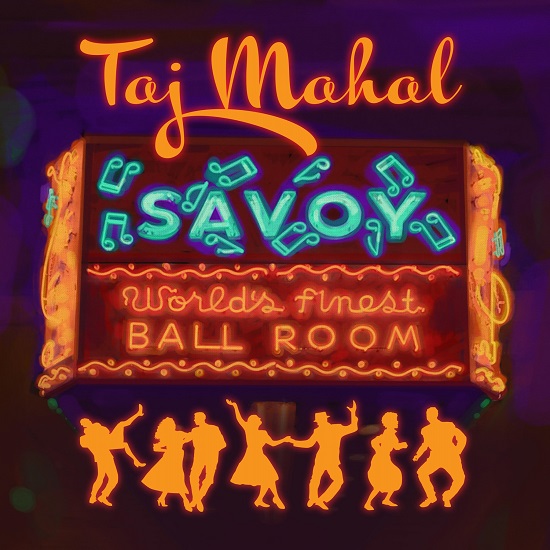
It’s not often I get a chance to review an album by a bona fide musical legend. However you look at it, Taj Mahal definitely fits that bill. He’s been around for ever, he’s influenced whole generations of blues players, collaborated with a host of well-respected players (Ry Cooder to name but one) and followed his own vision for over sixty years. During this time he’s also picked up four Grammy awards. Over the years, he’s pulled in various influences from a huge range of musical styles to spice up his own work, but never quite on this scale.
‘Savoy’ is a project that’s been simmering for almost twenty years between Taj and long-time collaborator and producer John Simon until they finally booked studio time for the project in 2022. ‘Savoy’ is Taj’s tribute to the music that his parents listened to in the swing era of the thirties and forties when they met at The Savoy Ballroom in Harlem. Taj sets the scene in the spoken intro to ‘Stompin’ at The Savoy’ leading in to a hefty fourteen interpretations of swing standards. The arrangements are more in a lounge jazz rather than a barnstorming big band style with all the players turning in relaxed, easy and underplayed performances. Even the solos (and there are a few of those, it is a jazz album after all) are beautifully laconic.
‘Savoy’ is a labour of love for Taj Mahal evoking his earliest memories of music that filled his childhood and started his odyssey through blues and its many associated styles. It’s pure nostalgia, and why not? Anyone who navigates the music business successfully for over sixty years is entitled to look over their shoulder now and again, particularly when it’s done with such subtlety and sophistication. In the best tradition of reinterpretations of classics, Taj Mahal puts his own stamp on the covers. ‘Summertime’ is switched up from ballad tempo to a swinging shuffle, while the album’s closing song, ‘One for My Baby (and One More for the Road)’ stretches out the smoky three AM vibe to a languorous eight minutes. And ‘Baby It’s Cold Outside’ is exactly as you would expect with a guest appearance from Maria Muldaur.
All of the elements of thirties swing are baked in to ‘Savoy’; there are classic horn arrangements recreating the big band sound on a smaller, more mellow, scale; solos from across the instrumental range, including flute and harmonica and even a bit of scat singing from Taj. If you want an affectionate tribute to thirties jazz played by superb musicians, then look no further.
‘Savoy’ is out now on Stony Plain Records (SPCD1470/SPLP1470).
Here’s a clip of ‘Summertime’:
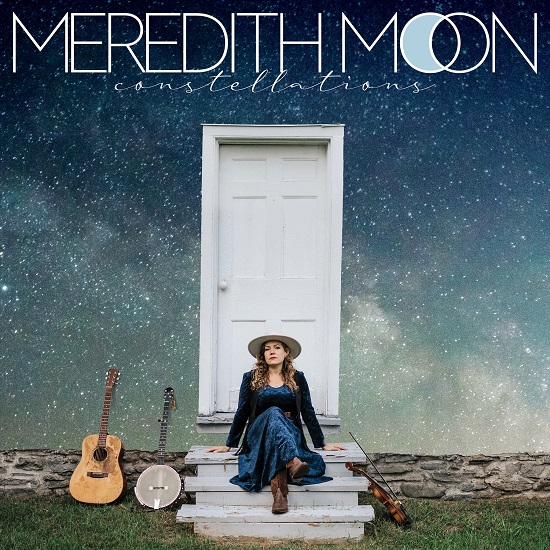
Where do we start with this one? It’s not quite a first album, it’s the first album that isn’t self-released and it’s a journey by road, by rail and by water taking us from the point where Meredith learned to play clawhammer banjo from YouTube videos to playing support gigs with a Canadian folk legend last year; this odyssey hasn’t been a straightforward one. She set off with her banjo, hitchhiking between venues with a folk-punk band and booking gigs using traditional music and punk networks across the Americas and Europe. It was an interesting way of honing her craft while providing material for some of the songs featured on ‘Constellations’.
As a self-taught player of traditional Appalachian music, you would expect to hear some traditional influences on the album and you wouldn’t be disappointed. There’s a banjo instrumental ‘Needlecase Medley’ (accompanied by podorhythmie – you can google that one) and the traditional ballad ‘Soldier’s Joy’. Its incongruously uptempo jaunty feel emphasises the pathos of a soldier fighting off the pain of battlefield wounds with opiates and alcohol.
Of the eight originals, unsurprisingly, there’s an instrumental piece, ‘Brokenwing Bird’, which showcases Meredith’s banjo skills. It’s a tour de force with superb playing throughout, style and tempo changes including a rallentando ending to represent the bird fading away. Of the remaining songs, there’s a strong emphasis on travelling; ‘Constellations’ is a hitchhiker’s song about seeing the night sky with a lover, while ‘That Town’ references the town of Wawa in Northern Ontario where hitchhikers often get stranded. ‘Lighthouse County’ and ‘Mark Twain’ are both nautical songs, the latter referencing the pseudonym of Samuel Clements and its original nautical meaning. There are also references to the constellations throughout the song as well. And while we’re on the subject of literary references, ‘Starcrossed’ has a couple of Shakespearean references including the obvious ‘Romeo and Juliet’ one.
‘Constellations’ is a fascinating piece of work. Setting aside the banjo virtuosity, the arrangements are minimal, allowing the songs to impress without too much embellishment. Meredith’s voice is understated throughout and the songs are interlinked by various themes and styles, creating a sense of unity across the album. It took a few listens to get under the skin of this understated piece of work, but it was definitely worthwhile. And what about that Canadian folk legend I mentioned? Meredith has consciously avoided playing on the fact that she’s the daughter of Gordon Lightfoot, preferring to make it on her own merits but the time has come now to open up on that one.
‘Constellations’ is out now in Europe on True North Records (TND807).
Here’s the official video for the song ‘Constellations’:
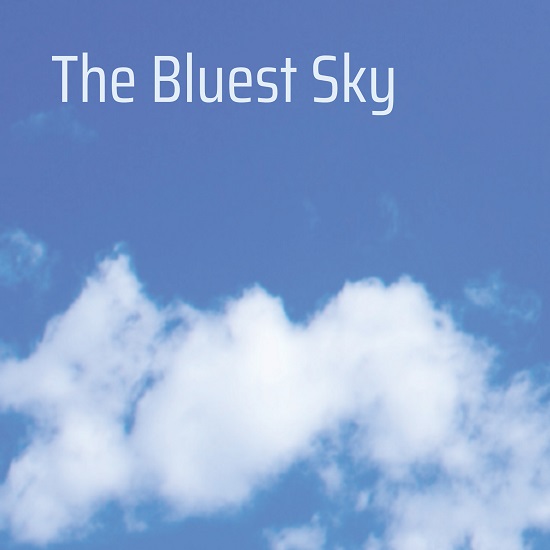
The Bluest Sky is the latest incarnation of Chuck Melchin, following his spell of four albums and two EPs as the cornerstone of celebrated Bean Pickers Union. The self-titled album is an attempt to move on from gentler introspective feel of his earlier work to creating “music that will make you want to drive your car faster”. With the nine songs featured here, he’s definitely succeeded; there’s only one slower, more contemplative, song on the album, but more about that later. The Laurel Canyon influence is strong on ‘The Bluest Sky’ with nods to Eagles, Neil Young and maybe even Evan Dando at times. The album was put together using the post-COVID method of musicians recording parts in their own studios before being mixed and mastered by Dave Westner; the results are organic and seamless.
The opening song, ‘Belly to the Bar’ sets the tone for the rest of the album with a country rock feel driven along by a pair of electric guitars under Melchin’s slightly fragile vocal as the story unfolds of a character trying to avoid being pulled into a rebound relationship. Most of the album’s songs are about personal situations although each has a slightly different twist. ‘The Girl It Took the Universe’ is a metaphysical look at the unseen forces moulding and pulling together two people over the aeons until the time is ripe for them to meet ending on a classic sixties sus4/sus2 progression, ‘Amy Jean’ is a straightforward karma and revenge song with a Southern rock feel that hints at the Allman Brothers’ Band’s ‘Jessica’ and ‘I Am James’ is a gentle country rock story of a man too shy to get himself noticed by a woman. ‘Drive Through Confessional’, with its mainly acoustic arrangement before a soaring electric guitar joins the mix, is a powerful piece of hometown nostalgia that turns around with the realisation that that reason for going back is the death of a loved one; it’s a powerful piece of work.
The two songs that step outside the personal may or may not be connected. The slow and melancholy ‘New Berlin’, its sadness punctuated by pedal steel fills, is a snapshot of a smalltown American town destroyed by a world economy that values only profit and scale; things can only get worse. There are a couple of references to classic American songwriters, John Fogerty’s ‘The Old Man Down the Road’ and Townes Van Zandt’s ‘Waiting Round to Die’ in the lyrics. It’s a powerful song with a storyline that could ultimately lead to the apocalyptic vision of ‘Bunkhouse’, the album’s penultimate song. The story of an unspecified rebellion and survival skills is played out over a Crazy Horse-style backing to maximum sinister effect.
Chuck Melchin and his collaborators have achieved the primary aim of making us want to drive faster while creating a bunch of varied and beautifully crafted songs. Job done.
‘The Bluest Sky’ is out now.
This is ‘Bunkhouse’:
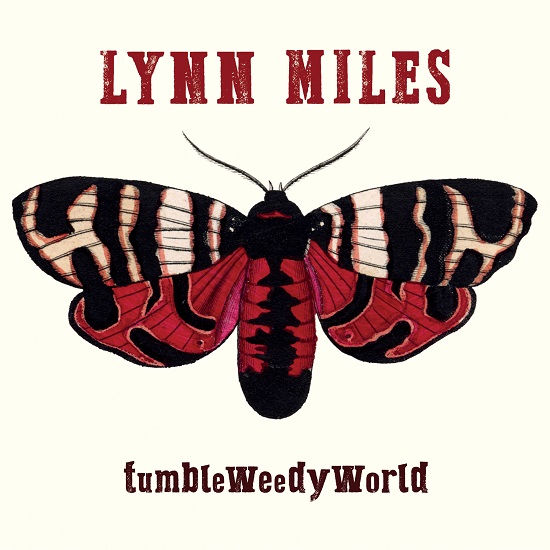
So what’s ‘TumbleWeedyWorld’ about then? Basically it’s about ten songs crafted by a superb songwriter, with musical arrangements that enhance the songs without submerging them and delivered in a beautifully clear fluty voice by Lynn Miles. But I suspect you’re expecting about another three hundred words before I put this one to bed.
With a back catalogue of fifteen albums, a collection of over nine hundred songs, a host of awards and covers by many artists, Lynn has deservedly been a fixture on the Canadian circuit for many years. ‘TumbleWeedyWorld’ is exactly the kind of album you would expect from someone with that pedigree.
The songs are so good that the album doesn’t need a huge production to make them work. The backbone of the arrangements is a traditional string band line-up of upright bass, fiddle, guitar and dobro. Add the exquisite harmonies and you have everything you need for an album of high lonesome-tinged country. In line with the minimalism of the arrangements, the album doesn’t feature a lot of solos, it’s much more about creating interesting textures. There are plenty of instrumental fills from the various players, but the only real solos are the laid-back banjo and mandolin efforts on ‘Hide Your Heart’ and the guitar solo on the rousing, uptempo ‘All Bitter Never Sweet’ which is a nod in the direction of Johnny Cash and June Carter’s ‘Jackson’. That particular couple also make an appearance earlier on the album.
It’s an album of sad songs which somehow manages to end on an optimistic note in the love song ‘Gold in the Middle’ with its effortless vocal and stripped-back arrangement emphasising the purity of the message. The remaining nine songs, with the exception of the relatively positive ‘Palomino’, are explorations of the ways that relationships can fail or the ways we can be hurt. If you want a couple of examples of Lynn’s mastery as a wordsmith, there are two songs that are absolutely packed with poetic imagery.
The opener, ‘Night Owl’, starts from the same situation as Oliver J Leiber’s Paula Abdul song ‘Opposites Attract’ before grim reality kicks in with the realisation that this relationship would never work. The heart-breaking ‘Johnny Without June’ explores the reality of being the one left behind after a long relationship is ended by death. It’s delivered in almost a Nashville style and, just in case you didn’t get the song’s references, it’s all made clear by two references to Johnny Cash songs in the song’s final four lines.
‘TumbleWeedyWorld’ is a polished piece of work from a great songwriter. Lynn Miles has taken a cold, hard look at the things that can go wrong for us in a screwed-up world and expressed them in words and music. However, she leaves room for optimism (or dodging the tumbleweeds) with ‘Palomino’ and the closing song ‘Gold in the Middle’. If you’re a fan of country in any of its many forms, you should give this gem of an album a listen.
‘TumbleWeedyWorld’ is out now on True North Records (TND802).
Here’s the lyric video for ‘Johnny Without June’:
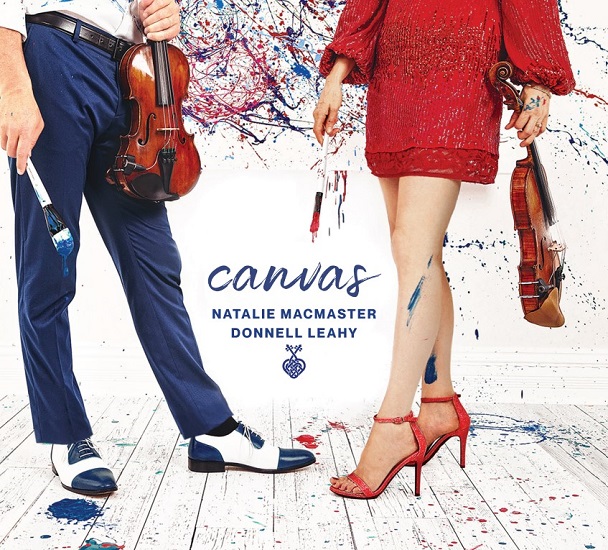
And still the pandemic albums keep coming; it took a while to adjust, but the adversity of 2020 and 2021 was a genuine mother of invention. The response of Natalie MacMaster and Donnell Leahy was to take the opportunity to go back to basics and start all over again with a tabula rasa, or a blank canvas, fusing their traditional musical roots with a huge variety of influences from across the globe and across the ages. All the way from Scotland in the nineteenth century to Spain and Latin America in the 2020s; that’s a broad and sometimes weird canvas.
The title track and exposition is a very short piece priming the canvas for the rest of the album. It’s a sketch that introduces atmospheric banjo and fiddle with some ethereal backing vocals and a bit of synth bass, hinting at some of the interesting combinations yet to come. And they are very interesting combinations.
Of the album’s thirteen pieces, two have lyrics (‘Woman of the House’ is sung by Rhiannon Giddens in Gaelic while ‘Wish You Were Near’ is sung by its author, Robyn Cunningham), three have backing vocals and the remaining eight are instrumentals ranging from the plaintive traditional James Scott Skinner tune ‘The Laird o’ Bemersyde’ to some absolutely bonkers (in the best possible way) fusions with other musical traditions. If you’re not admiring the quality of the musicianship, you’ll be smiling at the audacity of some of the fusion arrangements. The other James Scott Skinner to appear on the album, ‘The East Neuk of Fife’ begins its journey as a traditional fiddle piece before Natalie’s variations on the theme take over and the slap bass kicks in. That was definitely one of the smiley moments.
Here are some of my personal highlights. ‘So You Love’, featuring classical cellist Yo Yo Ma which starts with a solo piano, builds through a combination of Gaelic and Eastern European styles, string ensembles and a cello solo before speeding up into a huge string section with counterpoint fiddles and releasing the tension with a slow finish; it’s a symphony in miniature. ‘The Case of the Mysterious Squabbyquash’ is another kitchen sink production that gives a nod to the great Irish folk-rock fusion band, Horslips. The song opens with fairly traditional fiddle stylings and builds with rock bass and drums before a Hammond break leads into an outrageously over-the-top wah-wah guitar solo from the album’s producer Elmer Ferrer that sums up the album; you really don’t know what’s coming next. It could be step dancing, a horn section counterpoint fiddles.
‘Canvas’ is a truly remarkable piece of work. Just when you think Natalie and Donnell have exhausted the creative possibilities and they pull another trick out of the bag. You won’t get tired of listening to ‘Canvas’ any time soon and I think you’ll be grinning every time you listen to it.
‘Canvas’ is released in the UK on Friday April 7th.
Here’s the official video for ‘Colour Theory’ featuring Brian Finnegan:
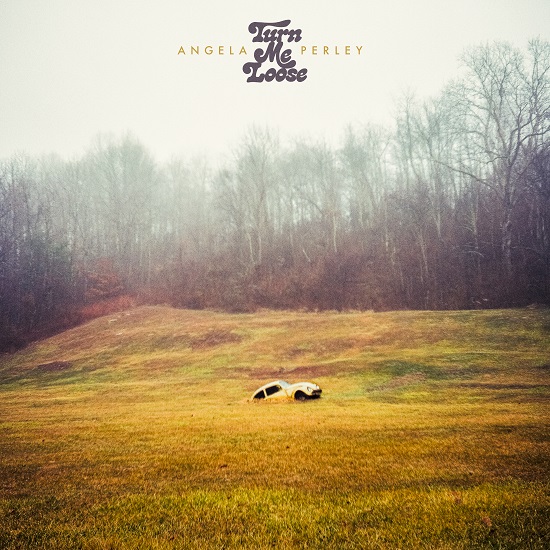
Angela Perley isn’t someone who wears her influences lightly; from sixties guitar rock through seventies country rock (Fleetwood Mac perhaps) to jangly eighties bands like The Bangles, The Go Gos and Katrina & The Waves. There’s also a touch of country/Americana thrown in, particularly on the penultimate song, ‘Holding On’, with its over-driven slide guitar and the pedal steel that adds just a tinge of blue to the entire album. Apart from the album’s final song, the solo piece ‘Wreck Me’, the songs are all fairly big productions with guitars facing off against each other, keys adding different textures and, of course, the sad machine pitching in with plaintive fills. To get the best from ‘Turn Me Loose’, you probably need to listen to it on the freeway (which sounds cool in a way that motorway never will) with the electric guitars playin’ way up loud.
From the opening song, ‘Plug Me In’, which channels the country rock of Eagles’ ‘Take It Easy’, adds a middle finger attitude and the urge to be moving which runs through the whole album with references to cars, planes, motorcycles, taxis, planes and even roller skates. Angela Perley’s desperate to be on the move; she needs to go somewhere, anywhere. Maybe it’s the inevitable reaction to a couple of years of movement restrictions after a long career as a touring musician – it’s certainly a theme that permeates the album.
‘Ripple’ is where Seventies glam-rock meets Lynyrd Skynyrd/Allman Brothers boogie; the riff is simple and the song’s driven along by powerhouse drumming as Angela sings about some of the things she wants to escape (including the vampires of the music business). Her influences are very clear musically and lyrically on the Sixties-inspired flower power-evoking ‘Near You’ with the reference to a “mellow fellow” and an almost English intonation in the lead vocal that harks back to the Sixties British invasion era.
‘Turn Me Loose’ is a collection of ten diverse songs pulled together by the combination of clean and over-driven guitars, Angela Perley’s musical influences and an itch to get out there and experience life again. You should listen to it on Route 66 in the summer, but you might have to make do with the M6 in spring. Either way, it’s going to sound great.
‘Turn Me Loose’ is available now from www.angelaperley.com.
Have a listen to the foot-stomping ‘Ripple’ here:
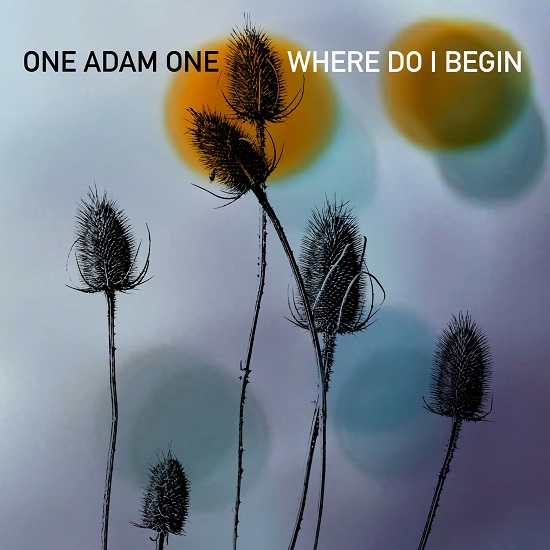
‘Where Do I Begin’ is a perfect example of the way digitisation and the internet has changed the music business. The conventional business wouldn’t know how to deal with it; five songs (OK, six if you count the no-swearing version of ‘Living Between the Lines’) is too much for an EP and not enough for an album (unless they’re eight-minute prog rock epics). Cutting out the major label bureaucracy means that if you have five great songs that hang together well, you can get it to the market fairly easily and call it a mini album. That’s exactly what Adam Reichmann and Todd Schnitzer have done with their debut as One Adam One.
The album’s almost a two-man show with Reichmann and Schnitzer singing and playing everything apart from some background vocals from Stephanie Stewart and a bit of baritone guitar from John Horton. Two things defining the album are the layers of instruments and vocals created by producer Todd Schnitzer and the fragile, vulnerable vocal of Adam Reichmann, at times on the edge of cracking completely, combining to create a beautiful melancholy feel across the five songs using all of the country/Americana palette (including pedal steel) and even a bit of harpsichord. The layering of tracks and use of reverb create an other-worldly feel that emphasises the melancholy style of the slow tempos and the vulnerability of the lead vocals.
Apart from the uptempo ‘Cold Murmurs’ with its driving tempo, lovely harmonies and maybe a hint of Tom Petty’s ‘Running Down a Dream’. It’s a song of renewal and optimism that offers a vivid contrast to the more downbeat songs that dominate the album. The opening song, the appropriately titled ‘Where Do I Begin’, builds from a gentle strummed acoustic intro to a full band arrangement with synths as the lyrics tell a story of hopelessness and helplessness after a broken relationship, while the closer, ‘Platte River’, is a slow, organ-driven, piece of nostalgia for a lost place, time and relationship.
‘Hollywood Ending’ has an arrangement that builds to a big finish as the lyrics explore the gulf between real life and the media presentation of life; it’s powerful stuff. Finally, ‘Living Between the Lines’ (my personal favourite) has an ominous reverbed guitar intro before Adam Reichmann’s vocal comes in the higher end of his range, almost cracking at times. The song tells the story of the unsung and unnoticed who do all of the things that we take for granted. The chorus is absolutely gorgeous.
‘Where Do I Begin’ is five great songs, arranged cleverly to enhance the melancholy content of the songs and, ultimately, the upbeat sense of rebirth in ‘Cold Murmurs’. It may only be five songs, but it creates a sense of sadness, anger and nostalgia before taking a more positive turn. The album is a lovely snapshot of the genesis of One Adam One; I’m hoping there’s a lot more to come.
‘Where Do I Begin’ is released on Die Trying Records in the UK on Friday March 31st.
Don’t just take my word for it, here’s the video for ‘Living Between the Lines’:


